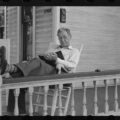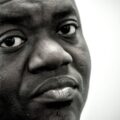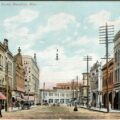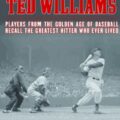The Bully, the Buddy, and the Populist Press

The Bully Pulpit: Theodore Roosevelt, William Howard Taft, and the Golden Age of Journalism
by Doris Kearns Goodwin
Hardcover, $40.00
Simon & Schuster, 2013
Doris Kearns Goodwin is America’s most popular active historian. Winner of a Pulitzer Prize for No Ordinary Time: Franklin and Eleanor Roosevelt: The Home Front in World War II (1995), Goodwin is even better known for Team Of Rivals: The Political Genius of Abraham Lincoln which appeared a decade later, was awarded the Lincoln Prize, guided President Obama in putting his administrative cabinet together, and inspired the Steven Spielberg film Lincoln, which brought Daniel Day-Lewis his record third Best Actor Oscar.
Goodwin’s chief theme in most of her writing is greatness: What is it? Who has it and who does not? Is it inborn or does it arise from historic circumstances? In her latest effort, The Bully Pulpit: Theodore Roosevelt, William Howard Taft, and the Golden Age of Journalism (2013), the matter of greatness appears virtually non-stop, both implicitly and explicitly. The central question is whether Roosevelt and Taft were truly “great,” or just luckier than most of us. Each was born to wealth and fame; one is the embodiment of Harvard, the other of Yale; both held seemingly countless public offices, including the presidency of the United States. They shared many of the traits of ordinary human beings—especially Taft—yet they also made the most of extraordinary opportunities that confronted them in an exceptional era of historic upheaval.
Theodore Roosevelt was a sickly child who—largely through self-will—evolved splendidly into a kind of superman, charging fearlessly up Cuba’s San Juan Hill (actually Kettle Hill) and, soon after, into the White House. William Howard Taft was the ultimate gentle giant, smiling his way through life, charming everyone he met, never quite sure of himself, and always in TR’s (as all knew him) shadow. The achievements of these two men were enormous, almost comical in their unheard-of range. Taft was Class Orator at Yale and a member of Skull and Bones. He became a superior court judge at an early age, held posts as Governor General of the Philippines, Secretary of War, President of the United States, Kent Professor of Constitutional Law at Yale, and Chief Justice of the U.S. Supreme Court. Roosevelt was a member of the Porcellian and Hasty Pudding clubs at Harvard, graduated Magna Cum Laude and Phi Beta Kappa, was the youngest-ever member of the New York state legislature, headed the New York City police, and acted as Secretary of the Navy, Governor of New York, Vice President and President of the United States; he was also the Panama Canal visionary, a conservationist without equal, destroyer of the Republican Party, author of some forty books, and the first American winner of the Nobel Peace Prize.
These, obviously, are astonishing records. But are they guarantors of lasting greatness? Gutzon Borglum, the designer of Mt. Rushmore, founded his mammoth vision solidly on his personal certainty of Roosevelt’s greatness. Indeed, most presidential experts place Roosevelt among the five “best” U.S. Presidents—after the perennial top three, Washington, Lincoln, and the second Roosevelt (Teddy’s distant fifth cousin), TR and Thomas Jefferson are usually next. As for Taft, he’s back in the pack somewhere—just where he wanted to be. If it is possible to be mediocre at a great level, Taft was. He played a magnificent supporting part throughout most of his life of stunning accomplishments.
“Big Bill” (as he was known at Yale) built a stellar reputation on his excellent work for others—especially for TR. Roosevelt himself was always seen as a doer, one who gave orders rather than taking them. Though the two men appeared to agree on most major matters, it was Roosevelt’s forcefulness that enabled him to use his self-styled “bully pulpit” to, in Goodwin’s words, “focus the charge of a nation’s movement, to apply an ethical framework, through governmental action, to the untrammeled growth of modern America.” The transformation, says Goodwin, was so remarkable “that a molt seems to take place, and an altered country begins to emerge.”
By the mid-1890s the patrician world that had spawned Taft and Roosevelt was imperiled by widespread discontent over the industrial order—or disorder. While the growth of colossal corporations in the aftermath of the Civil War had, as Goodwin reports, “produced immense, consolidated wealth for business owners…the lives of working people, western farmers and eastern factory workers alike, had become increasingly difficult.” The independent labor candidate for mayor of New York City, Henry George (running against the 28-year-old Roosevelt), acknowledged that industry had fueled unprecedented innovations, but observed with alarm that “the gulf between the employed and the employer is growing wider, social constraints are becoming sharper; as liveried carriages appear, so do barefooted children.”
In the eyes of many Americans, open revolution had become a serious possibility. Violent strikes shut down factories, mines, and railroads as a mood of rebellion spread among the laboring classes. Law and order were breaking down. When in 1893 the most serious depression the country had yet seen led to the loss of millions of jobs, the now-impoverished workers “feared that in the wreckage of the Gilded Age, democracy itself would crumble.”
It was among such “pangs of rampant anxiety and latent insurrection,” Goodwin writes, that “McClure’s Magazine was born,” spearheading the “Golden Age of Journalism” that is the third leg of the stool upon which her volume stands. “This acclaimed muckraking journal,” she adds, “would play a signal role in rousing the country to the need for political and economic reform, animating the Progressive movement with which Theodore Roosevelt’s name would forever be linked.”
Goodwin opens her tome with Roosevelt’s triumphal return to America in mid-June 1910. He had just spent a year on safari in Africa and then being hosted by royalty and heads of state across Europe. Shouts of “Viva Roosevelt” greeted him everywhere. His unparalleled reception was a tribute to America’s newfound position of power, a stage on which he had placed the nation during his Presidency. The New York Times exulted, “No foreign ruler or man of eminence could have aroused more universal attention, received a warmer welcome, or achieved greater popularity among every class of society.”
If anything, Roosevelt’s welcome home was even more remarkable than the European adoration. More than two hundred vessels, bedecked with flags and pennants, met him in New York harbor while thousands awaited him excitedly on shore. The most popular American since Lincoln, Colonel Roosevelt, as he now preferred to be called, may have been the most famous person on Earth. From his desk in the White House—a position virtually gifted to him by Roosevelt—President Taft said wistfully to his military aide, “His personality has swept the world…even small villages which one would hardly think had ever heard of the United States should seem to know all about the man.”
Taft’s admiration for his mentor was genuine. It seemed he felt little envy over Roosevelt’s superior personal gifts. These were, after all, products of a human drive rarely seen. No point in competing with such a man, particularly for an easy-going character like Big Bill Taft, who was always the most popular and least contentious boy in every class. Roosevelt‘s love for Taft was equally strong: he often gushed, “He has the most loveable personality I have ever come in contact with.” To Roosevelt, it was Taft—not himself—who was “America incarnate.” Goodwin paints a vivid picture of the similarities and contrasts between the two:
Both Will and Teedie (a childhood moniker) had the good fortune of growing up as favored children in close-knit, illustrious families where affection and respect abounded. Both inherited from their father’s legacies of honorable and distinguished careers, as well as a commitment to public service and dedication to the Republican Party. Where Will developed an accommodating disposition to please a living father who cajoled him to do more and better, Teedie forever idolized a dead father who had paid for a substitute for himself during the Civil War to placate his wife (a Southerner), yet had fostered military and historical tales of heroism in his beloved son; Will had the stronger physical endowment but the weaker self-control; Teedie, the weaker body but the greater strength of will. The enormously powerful Will abused his physical gift; the smaller Teedie, a heroic compensator, toughened and transformed his body. Will tended to stay indoors; Teedie tested himself outdoors, against nature. Taft was easy-going and even-tempered; Roosevelt perpetually in motion, as if to keep self-inquiry at bay. Will, by temperament warmer and more sociable than Teedie, found common ground with one-and-all; others instinctively responded to his smiling countenance and kindly demeanor.
Teedie was less approachable at first blush, limiting his associations to those who shared his class and station in life. Where Teedie was an intellectual adventurer with a passion for reading and a wide-ranging curiosity engendered by a broad set of experiences, Will worked methodically, within the defined frameworks outlined by his instructors. The one was self-assured, guided by his own ferocious determination; the other more subject to the entreaties of others, steering his course out of the desire to please. Will was more modest and straightforward; Teedie more boastful and complex. Common to both was a sober good sense and a willingness to work hard that led to high distinction in college and the promise of success as they looked forward to law school.
Taft, from his early years, dreamed of becoming Chief Justice of the U.S. Supreme Court. It seemed the perfect job for his contemplative temperament. Following his Yale oration and graduation, Taft headed back to Ohio, enrolled in Cincinnati Law School, and took his native town by storm. Soon he was appointed Collector of Internal Revenue for the Cincinnati district, and then became youngest judge in the State.
Roosevelt considered Columbia Law School, but his heart was not in it. So off he went into politics. At age 23, in 1881, he became the youngest member of the New York State Assembly. The following year, his first of forty books was published, The Naval War of 1812. His love of writing and admiration for writers of all levels taught Roosevelt “that the most effective means of circumventing the political machines rampant everywhere was to establish a good rapport with the press corps,” at which he was masterly. Such rapport would be a major foundation of his career, especially as he became intertwined with the mercurial Samuel S. McClure and his new eponymous magazine.
According to Goodwin, “descriptions of thirty-six-year-old Samuel S. McClure, the magazine’s founder, bore uncanny resemblance to accounts of Theodore Roosevelt himself.” McClure impressed all who met him as a “prodigious character…a vibrant, eager, indomitable personality that electrified even the experienced and the cynical.” Everyone noted his “genius,” his highly creative mind, and his “excitable energy,” which was contagious. McClure cut such a compelling figure that “novelists as varied as Robert Louis Stevenson, Willa Cather, Upton Sinclair, William Dean Howells, and Alice Hegan Rice all incorporated him as a character in their fiction.”
Raised in poverty in Country Antrim, in northern Ireland, McClure faced obstacles unimaginable to Roosevelt and Taft. “His journey to success,” Goodwin notes admiringly, “was therefore even more unexpected and striking than theirs.” After the untimely death of his father, young Sam made his way to America, enrolling in Knox College, Illinois, in 1874 (as Taft was enrolling at Yale). He later moved to Boston to work for a bicycle magazine, and poured his astounding energy into the job.
But Sam wanted a magazine of his own. He created a syndicate, raised money, and soon McClure’s was up and running. Before long, every writer of note, it seemed, was contributing. One awed reviewer observed that McClure “secured the best writers in the world.” By the 1890s, the success of McClure’s was assured. He lowered prices and sales soared, catching the attention of the leading competitors of the day. Early on, McClure understood that his magazine must have a “unity” beyond a mere compilation of freelance articles. McClure’s became, in effect, home to a new concept in journalism: that of staff writers, who would be employed full-time for one publication, hold guaranteed salaries, be given generous expense accounts, and set loose upon a political and economic world in need of reform.
Goodwin lucidly understands the importance of this dynamic linkage between the new kind of journalism and the developing political vision of Theodore Roosevelt:
…the ultimate success of McClure’s—its literary worth, its major contributions to Progressive Era reforms, and its significant role in the rise of Theodore Roosevelt—can be traced to the prodigiously gifted writing staff that McClure assembled. Along with the nucleus consisting of Ida Tarbell, Ray Stannard Baker, Lincoln Steffens, and William Allen White, the McClure’s staff intermittently included Burton Hedrick, Mark Sullivan, George Kibbe Turner, Will Irwin, Willa Cather, Stephen Crane, and Frank Norris. This talented pool of writers produced hundreds of influential pieces which played a major role in shaping public discourse around the most pressing economic and social issues of the day.
In creating “the most exciting and influential magazine the country had ever seen,” these driven
“Muckrakers,” as many of them came to be known, would soon join Roosevelt in battling corruption wherever it was to be found. Goodwin notes that Sam McClure—a “Columbus among editors,” according to critic Jeanette Gilder—was just as driven as the sometimes maniacal Roosevelt, and led “a seismic shift in the genteel world of patrician reformers.”
Goodwin details the way that Steffens, in particular, in hand with the famous reformer Jacob Riis, aimed Roosevelt at the notoriously corrupt Tammany Hall gang that controlled New York City. They also helped to wean young Roosevelt from his early conservative view that “the poor were those who had failed in life” (or had just not gone to Harvard). This would prove to be a decisive shift. Once he moved beyond “the steel chain of opposition to government intervention that had been his birthright,” Roosevelt would join with his new friend and D.C. neighbor William Howard Taft in veering the nation away from the laissez-faire doctrine that guided wealthy industrialists (including both of their fathers).
The turning point in this movement—for Roosevelt, Taft, and national journalism alike—was the Spanish-American War. The war would transform Roosevelt into a “real” warrior, send Taft to stabilize the Philippines, and establish McClure’s as one of the greatest political magazines in history.
Militant to his core, Roosevelt long romanticized battle. He feared that Americans, since the Civil War’s end, had grown sedentary, had lost “their soldierly values in the race for material gain.” When war erupted, Roosevelt rushed to join the fray, famously leading the Rough Riders in Cuba. Armed conflict ironically turned the idealistic war-monger into “a composed, level-headed soldier.” Edward Marshall, the New York Journal’s best-known correspondent, described the transformation at San Juan Hill:
Ushering a dozen men before him, Roosevelt stepped across the wire himself, and from that instant, became the most magnificent soldier I have ever seen. It was as if that barbed-wire strand had formed a dividing line in his life, and that when he stepped across it he left behind him…
Ray Stannard Baker flatteringly profiled the new hero in McClure’s and predicted that he “could be President within ten years.” In an age of things ever-new—the automobile, light bulb, moving pictures, radio, phonograph, etc.— here came Teddy Roosevelt, a new hero. Roosevelt would transform this newfound fame into the Governorship of New York.
Taft went off to liberate the Philippines from the chaos remaining there after Teddy’s Cuban war. It was to be the most gratifying period of his long public career. President McKinley appointed him to a new Philippine Commission “charged with formulating a civilian code for governance.” Taft at first objected on the grounds that he “was not the right man for the task,” that he had “never been an expansionist” and had been “strongly opposed to taking the Philippines” in the first place. McKinley countered that such objections were beside the question. “Now that the Philippines had fallen to the United States, it behooved the United States,” the President said, “to govern them until such time as their people had learned the difficult art of governing themselves.”
Taft and his wife Nellie were huge hits in the islands for years. In 1901, Taft was inaugurated as Governor General, a post that Roosevelt had once coveted himself. The Tafts perhaps would have happily served in Manila indefinitely, but the newly-inaugurated President Roosevelt wanted his friend back in Washington, D.C., to help him run the country. In 1904 Taft and Nellie reluctantly returned to the capital so that Will could serve his White House boss in any way—becoming the Secretary of War, anchoring the presidential cabinet, and overseeing the dredging of the Panama Canal.
As for McClure’s, the war inspired its founder to jettison all old plans and create a special war edition, which, in the coming months, led to a continuous flow of war articles. Tarbell was assigned to cover McKinley’s White House, Baker to analyze how the press covered the war, and White to gauge the heartland’s response to a call for 125,000 volunteers. The shift from historical research and the arts to current affairs had a profound effect on all of them. This new focus would soon lead beyond the war, to confrontations with Standard Oil, Chicago meatpackers, the Northern Securities Company (which combined three railroads to control rail prices in the Northwest), and other malefactors.
Roosevelt’s fast rise scared the Republican bosses who had never trusted him to do their bidding and who therefore successfully maneuvered him out of a second term in Albany and into the “useless,” virtually invisible office of the Vice Presidency of the U.S. He wanted none of it—“As Governor I can achieve something, but as Vice President I should achieve nothing.” Riis observed that TR’s “enemies had triumphed. At last they had him where they wanted him.” Roosevelt saw no realistic chance of ever being President. But the assassination of President McKinley by an anarchist on September 6, 1901, made TR, at forty-two, the youngest President in our history (with Kennedy next, at forty-three). The machinations of the Republican bosses had come home to roost. Ohio Senator Mark Hanna, McKinley’s campaign manager, Roosevelt’s avowed enemy, and “Boss of bosses” among Republicans, publicly lamented, “Now look, that damned cowboy is President of the United States!”
In the years to follow, Roosevelt would build the Panama Canal, save the Grand Canyon, erect Roosevelt Dam, clean up corruption in many corners of the nation, and negotiate peace between the squabbling Japanese and Russians, for which he would be awarded the Nobel Peace Prize in 1905. He then yielded the presidency to his friend Taft, whom he assumed would dutifully continue the great work begun by the Roosevelt administration. Roosevelt’s zeal for a Taft presidency far exceeded the candidate’s own. It continued to flourish even as pressure grew for the wildly popular incumbent to renege on his earlier vow not to seek a second elected term.
Taft’s election victory was less than the landslide Roosevelt had garnered four years earlier, but he was nevertheless thought by many at the time to be “the greatest all round man” to reach the White House. Such was his formidable record of achievement as, perhaps, the greatest “Number 2” of all time. But could this exemplary subordinate actually lead the nation? He wasn’t sure himself. Taft’s underlying insecurity continued to haunt him. Always a procrastinator, he had trouble even appointing his cabinet—a foreboding sign. In his early presidency, Taft exuded a calmness that signaled “peace and reassurance” that was opposed to the “vituperation and denunciation” which often hung over the Roosevelt administration. Yet even his close advisor Archie Butt observed that Taft had “been living on the steam” of TR. “He will have to find his own fuel now.”
Goodwin devotes many pages to the Taft presidency, more pages than might be strictly necessary. Her account—every bit as detailed as that of Roosevelt’s years in office—bogs the exhausted reader down in tariff fights, corporate taxes, and discord within the administration. Disputes arose over water, coal, and the developing chasm between Taft supporters and Roosevelt people, who felt their legacy slipping away. Taft’s mishandling of a rift between Richard Ballinger, his Interior Secretary, and Gifford Pinchot, the great forester and a Roosevelt favorite, became the “first volley that would eventually split the Republican Party” and result in the election of 1912 that put Democrat Woodrow Wilson in the White House.
“One trouble is no sooner over in this office than another rises,” Taft complained. In contrast to his predecessor, he seemed “a jelly fish” incapable of real leadership. It was reported to Roosevelt that, because of Taft, “We have fallen back down the hill you led us up.” Senator Jonathan Dolliver of Iowa bemoaned that “Taft had lost the opportunity and wasted the prestige Roosevelt had bequeathed to him.” Indiana Senator Albert Beveridge told the former President: “The people at first received the President (Taft) with good expectations, then with tolerance, then with faint distrust, then with silent opposition, and now with open and settled hostility.”
Would Roosevelt endorse the crumbling Taft administration? Would he join the insurgent rebellion?
When Canada backed out of a tariff deal hatched by Taft, the President hit bottom. Roosevelt snatched the opportunity: “As for my ever having any enthusiasm for Taft again, it is utterly impossible.” Knowing that the party bosses would stick with Taft, Roosevelt worked to build a primary system that might lead to his nomination on the convention floor. It was not to be. Part of the problem was Roosevelt’s sheer forcefulness—those fearful of him were afraid that “once he got to the White House again, he’d never leave it.”
Taft won the convention, but his victory split the Republican Party and lost the war, making a Wilson election inevitable. Roosevelt invited supporters to join him in a third party with his progressive beliefs as its agenda. The platform: a living wage, prohibition of child labor, federal regulation of interstate corporations, a graduated inheritance tax, an eight-hour workday for women, new standards for workmen’s compensation, and a system for social insurance designed to protect citizens against “the hazards of sickness…involuntary unemployment, and old age, to which employers and employees would both contribute.”
Goodwin gets all this history down in a form that has, over the course of her career, become somewhat familiar. Each of her six books is enormous, stuffed with facts, figures, and more than a bit of trivia. Bully Pulpit, like its predecessors, is huge—750 pages of text plus 115 pages of notes and 103 photos. She follows Roosevelt’s career most closely, while shuffling Taft and the McClure’s cast in and out of center stage. Though her books may feel similar in both the heft and style, there’s nothing particularly wrong with that. Her writing is clear and engaging; the work is well researched; and, most importantly, it makes this history alive to everyone from the oval office down.
The eminent historian concludes her massive—and massively impressive—history:
Though the two men had strikingly different temperaments—Roosevelt’s original and active nature at odds with Taft’s ruminative and judicial disposition—their opposing qualities actually proved complementary, allowing them to forge a powerful camaraderie and rare collaboration. There was a time, at the height of their careers, when Theodore Roosevelt and William Howard Taft stood shoulder to shoulder as they charted a new role for the U. S. government that would fundamentally enlarge the bounds of economic opportunity and social justice.
While the matter of the “greatness” of our heroes Roosevelt and Taft might remain debatable there can be no doubt that the term “great” is the best descriptor for the 21st century nation they jointly helped to create, and about which Doris Goodwin writes with much clarity and expertise.
About Robert Chambers
Bob Chambers was born and grew up in North Carolina. He was educated in the public schools of that state and at Duke, Yale, and Brown Universities. For more than three decades he taught American literature and served as an academic administrator at Yale, Bucknell, Western Maryland College (now McDaniel College), and at Trinity College of the University of Melbourne in Australia. He was for sixteen years President at Western Maryland. He also was for five years a Senior Consultant with Marts & Lundy, Inc., a major international firm assisting colleges, universities, and preparatory schools with their fund-raising needs. A dedicated traveler, he has visited 66 countries and five continents, living for a time in England, Ireland, Japan, and Australia, as well as in various parts of the United States. Now retired, he resides in Gainesville, Florida, and the Coachella Valley of California.





